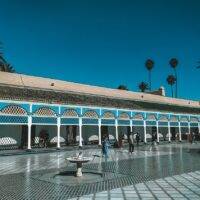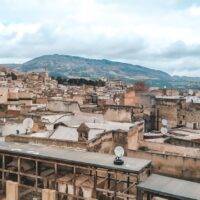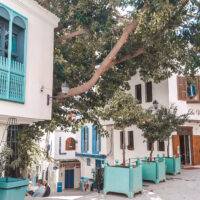What to Eat in Morocco: Must-Try Dishes, Street Food & Sweets
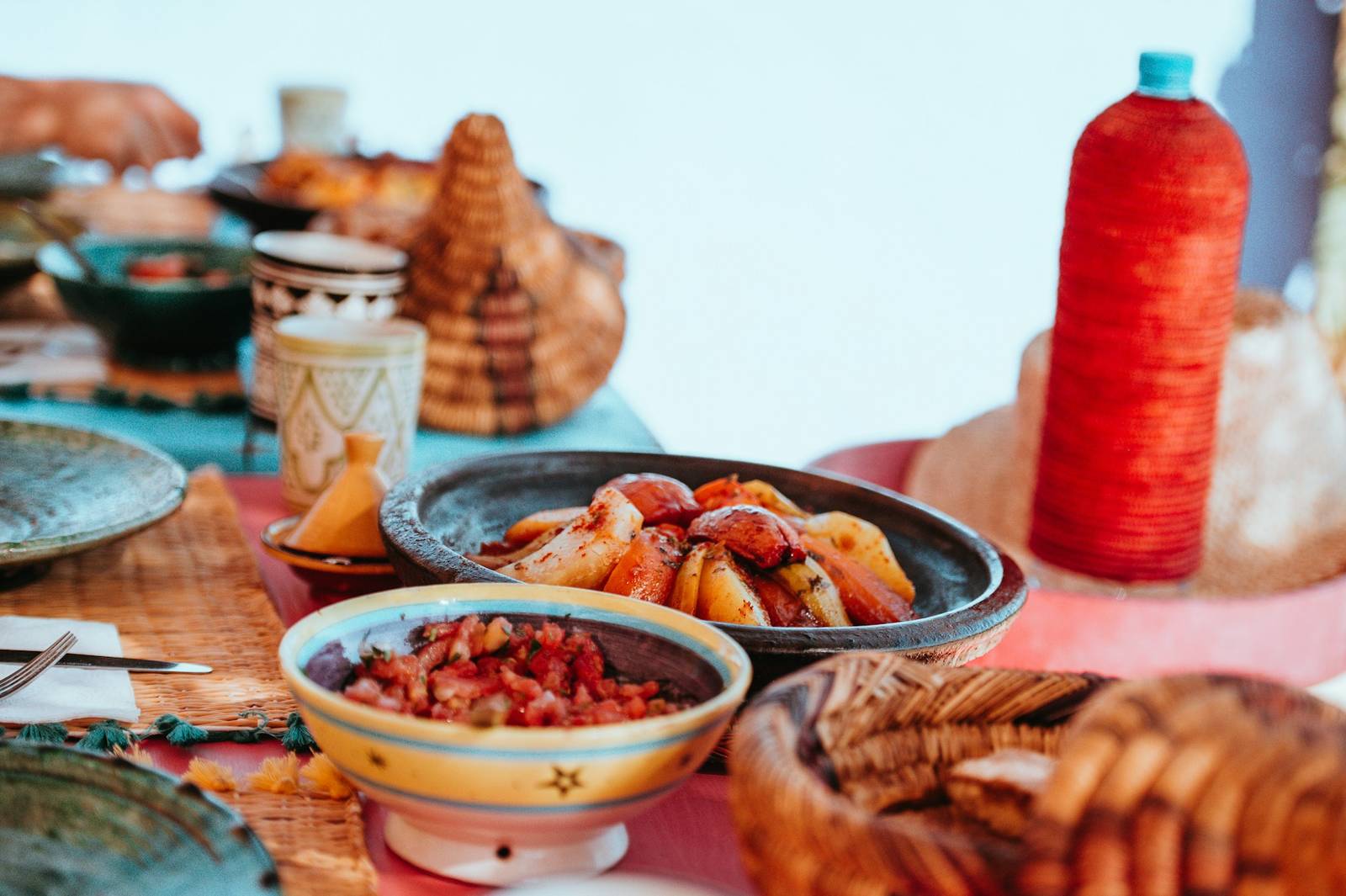
One of the best ways to get to know Morocco is through its food. From the smoky scent of sizzling brochettes on street corners to the delicate, flaky layers of a fresh msemen served with honey and mint tea, eating in Morocco is an experience that engages all the senses.
During my time traveling across the country—from Marrakesh’s buzzing medina to the quiet blue alleys of Chefchaouen—I made it a point to try everything I could. This guide pulls together my favorite Moroccan snacks, street food, and sweet treats—what stood out, what surprised me, and what I think every traveler should taste at least once. Come hungry.
Snacks & Street Food in Morocco
One of the best ways to experience Morocco’s vibrant culinary culture is by hitting the streets. Moroccan street food is flavorful, affordable, and widely available—from busy souks to roadside stalls. Here are some must-try bites:
- Msemen: A flaky, square-shaped pan-fried flatbread, often served with honey or stuffed with savory fillings like onions and spices. You’ll find it sizzling on griddles in morning markets—grab one fresh and hot.
- Maakouda: Deep-fried potato patties, crispy on the outside and soft inside. They’re a common snack across Morocco, especially in Marrakesh and Fez, often tucked into a sandwich with harissa.
- Snail Soup (Babbouche): Found bubbling in large metal pots in medinas, this peppery broth with tender snails is a local favorite, especially in Marrakesh.
- Sfenj: Morocco’s version of a doughnut—chewy, fried dough rings dusted with sugar or eaten plain. Best when fresh from the oil.
- Harira (in small cups): Though it’s a traditional soup often eaten to break the fast during Ramadan, harira is also sold as a street snack, served warm and fragrant in small bowls or cups.
- Grilled Corn on the Cob: Simple and satisfying, this smoky, salted street-side snack is a staple in both coastal and inland cities.


Traditional Moroccan Dishes & Tagines
Moroccan meals are full of bold flavors, fragrant spices, and slow-cooked goodness. Here are some of the country’s most iconic dishes you shouldn’t miss:
- Tagine: Named after the earthenware pot it’s cooked in, tagine comes in many varieties. Try chicken with preserved lemon and olives (a classic), lamb with prunes and almonds, or vegetable tagine for a comforting, meat-free version. Most restaurants serve tagines piping hot with a side of warm bread to scoop up every last bit.
- Couscous: Traditionally served on Fridays, this steamed semolina dish is often topped with slow-cooked meat, vegetables, and a broth. You’ll also find it sweet, with caramelized onions and raisins—perfect if you enjoy a savory-sweet mix.

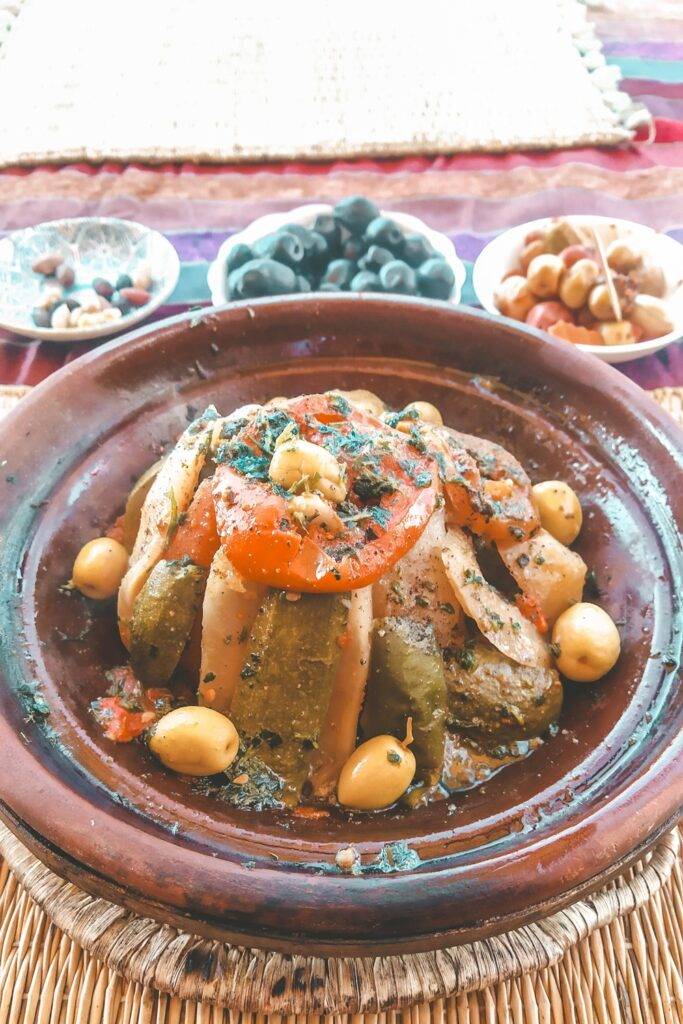
- Rfissa: A lesser-known gem made with lentils, shredded msemen or trid (thin pancakes), and chicken in a spiced broth. It’s comforting and aromatic, often served during family gatherings.
- Bissara: A thick, hearty fava bean soup that’s especially popular in colder months. Often eaten for breakfast, it’s drizzled with olive oil and served with warm bread.
- Kefta Mkaouara: Spiced meatballs simmered in a zesty tomato sauce, often finished with eggs cracked in just before serving. You’ll usually find this served in a tagine as well.
- Pastilla: A savory-sweet pie made with layers of paper-thin dough, usually filled with pigeon or chicken, almonds, and spices, and topped with powdered sugar and cinnamon. It’s rich and unforgettable.


Sweets & Desserts in Morocco
Moroccan desserts are often delicately spiced, nutty, and soaked in honey or orange blossom water—perfect alongside a glass of mint tea. Here are some local favorites you’re likely to come across:
- Chebakia: One of Morocco’s most iconic sweets, especially during Ramadan. These sesame-coated pastries are twisted into floral shapes, fried, then soaked in honey and sprinkled with sesame seeds. Sticky, crunchy, and delicious.
- Sellou (or Sfouf): A crumbly, nutty, and lightly sweetened mixture of toasted flour, sesame seeds, almonds, and spices. Often served during celebrations, it has a sandy texture and is surprisingly filling.
- Kaab el Ghazal (Gazelle Horns): Crescent-shaped pastries filled with almond paste and lightly scented with orange blossom water. They’re elegant, slightly chewy, and a staple in Moroccan tea rituals.
- Ghriba: Moroccan cookies that come in several varieties—almond, coconut, or sesame. They’re usually soft and crumbly with a powdered sugar coating and perfect for snacking.
- M’hanncha (“The Snake”): A visually stunning pastry made with filo dough, coiled to resemble a snake and filled with almond paste. It’s usually flavored with cinnamon and orange blossom and sliced into rounds for serving.
- Seasonal Fruit Platters: Often served at the end of a meal, a plate of fresh local fruits like oranges, pomegranates, or melons is a refreshing and common way to finish things off.

Drinks & Mint Tea Culture in Morocco
Drinks in Morocco are deeply intertwined with the country’s hospitality, tradition, and daily rhythm. While alcohol is available in certain places, most Moroccans opt for non-alcoholic refreshments rooted in centuries of culture.
- Mint Tea (Atay b’naana): The heart of Moroccan hospitality. Made with green tea, fresh mint leaves, and lots of sugar, it’s served throughout the day—from welcoming guests to ending a meal. Don’t be surprised if it’s poured from high above the glass; this helps create a light froth and cool the tea slightly.
- Fresh Orange Juice: Morocco’s oranges are incredibly sweet, and you’ll find freshly squeezed juice sold in markets, streets, and cafés. It’s especially refreshing in the heat and often cheaper than bottled water.
- Avocado and Almond Smoothie (ZaaZaa): A thick, rich drink made with avocado, ground almonds, milk, and sugar—sometimes topped with dried fruits or nuts. It’s more like a dessert in a glass and a local favorite.
- Raïb: A chilled yogurt drink, often sweetened and sometimes flavored with orange blossom or rosewater. It’s commonly found in markets and shops and makes a great snack or post-meal treat.
- Herbal Infusions: Besides mint, you’ll find infusions made with verbena, sage, or absinthe. These are often consumed for their soothing or digestive properties.
Save it on Pinterest for later:



